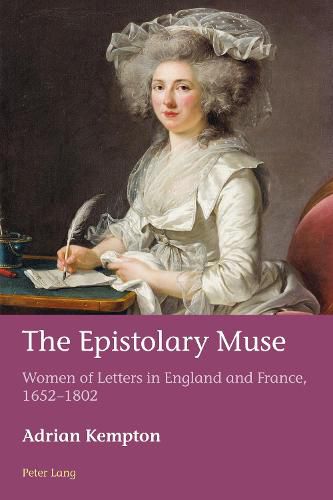Readings Newsletter
Become a Readings Member to make your shopping experience even easier.
Sign in or sign up for free!
You’re not far away from qualifying for FREE standard shipping within Australia
You’ve qualified for FREE standard shipping within Australia
The cart is loading…






This title is printed to order. This book may have been self-published. If so, we cannot guarantee the quality of the content. In the main most books will have gone through the editing process however some may not. We therefore suggest that you be aware of this before ordering this book. If in doubt check either the author or publisher’s details as we are unable to accept any returns unless they are faulty. Please contact us if you have any questions.
Epistolary fiction was in full flower during the period from 1652 to 1802, featuring the masterworks of Guilleragues, Richardson, Rousseau and Laclos. This study traces the development of the art of letter-writing and familiar correspondence and its adaptation by women writers into a remarkable range of literary genres, both fictional and non-fictional. In addition to the better known categories of the monodic love-letter sequence and the polyphonic epistolary novel, these sub-genres include letter miscellanies, essays, travelogues, educational novels and verse epistles. To all these, women writers made a valuable, and sometimes totally original, contribution. Indeed, it could be said that it was essentially through letter-writing that women achieved literary recognition.
This volume examines each of these epistolary categories in turn, revealing how women writers from either country excelled in a particular genre: the French, for example, in the epistolary monody and fictional foreign correspondence, the English in the miscellany and verse epistle, and both in the polyphonic letter-novel. Finally, the study notes how, despite the rapid decline of epistolary fiction in the nineteenth century, a select number of letter-novels by American, English and French women writers still continue to be published.
$9.00 standard shipping within Australia
FREE standard shipping within Australia for orders over $100.00
Express & International shipping calculated at checkout
This title is printed to order. This book may have been self-published. If so, we cannot guarantee the quality of the content. In the main most books will have gone through the editing process however some may not. We therefore suggest that you be aware of this before ordering this book. If in doubt check either the author or publisher’s details as we are unable to accept any returns unless they are faulty. Please contact us if you have any questions.
Epistolary fiction was in full flower during the period from 1652 to 1802, featuring the masterworks of Guilleragues, Richardson, Rousseau and Laclos. This study traces the development of the art of letter-writing and familiar correspondence and its adaptation by women writers into a remarkable range of literary genres, both fictional and non-fictional. In addition to the better known categories of the monodic love-letter sequence and the polyphonic epistolary novel, these sub-genres include letter miscellanies, essays, travelogues, educational novels and verse epistles. To all these, women writers made a valuable, and sometimes totally original, contribution. Indeed, it could be said that it was essentially through letter-writing that women achieved literary recognition.
This volume examines each of these epistolary categories in turn, revealing how women writers from either country excelled in a particular genre: the French, for example, in the epistolary monody and fictional foreign correspondence, the English in the miscellany and verse epistle, and both in the polyphonic letter-novel. Finally, the study notes how, despite the rapid decline of epistolary fiction in the nineteenth century, a select number of letter-novels by American, English and French women writers still continue to be published.